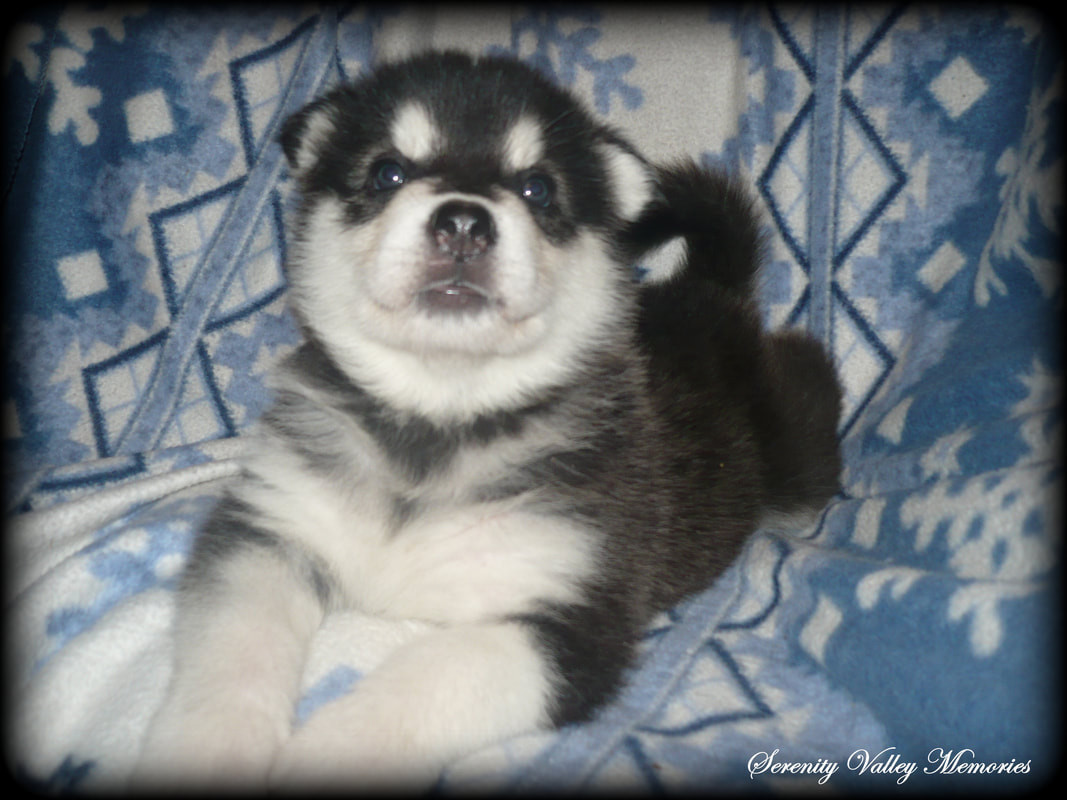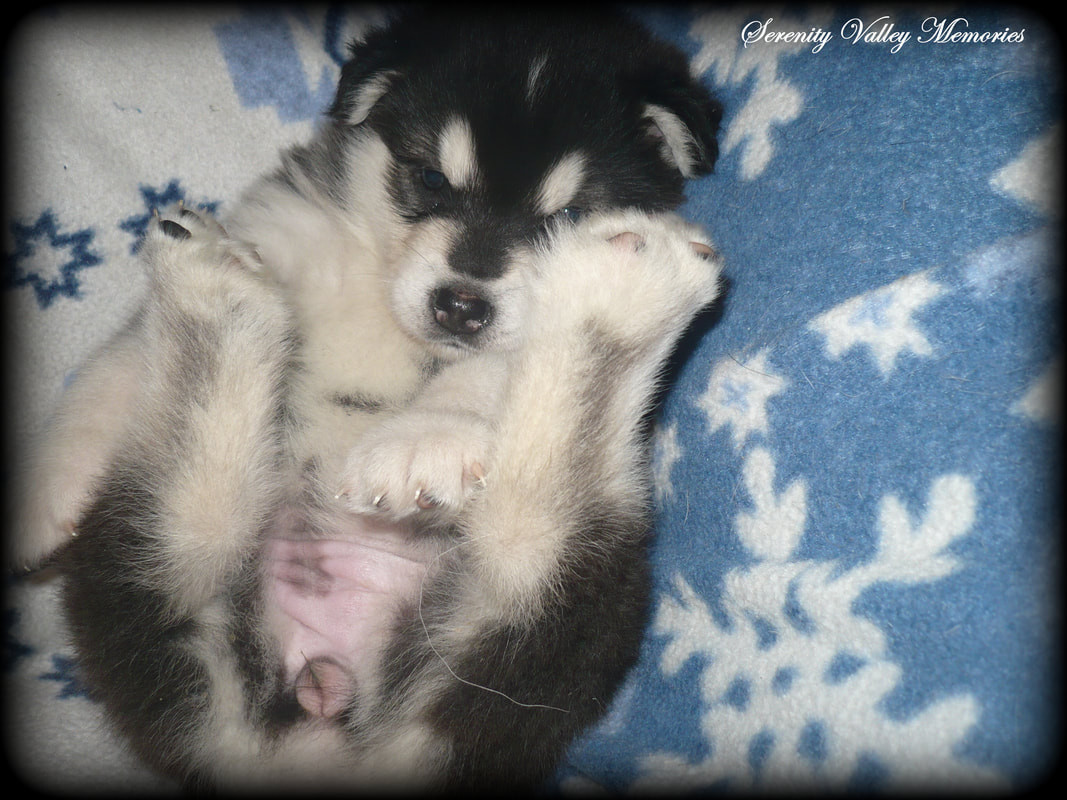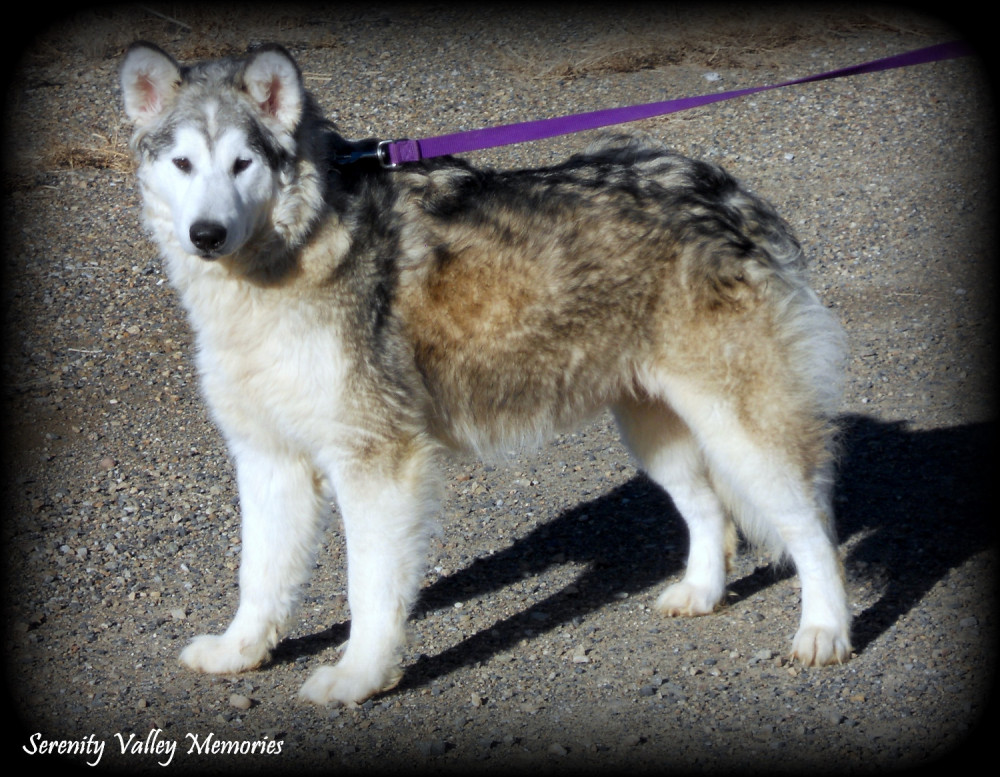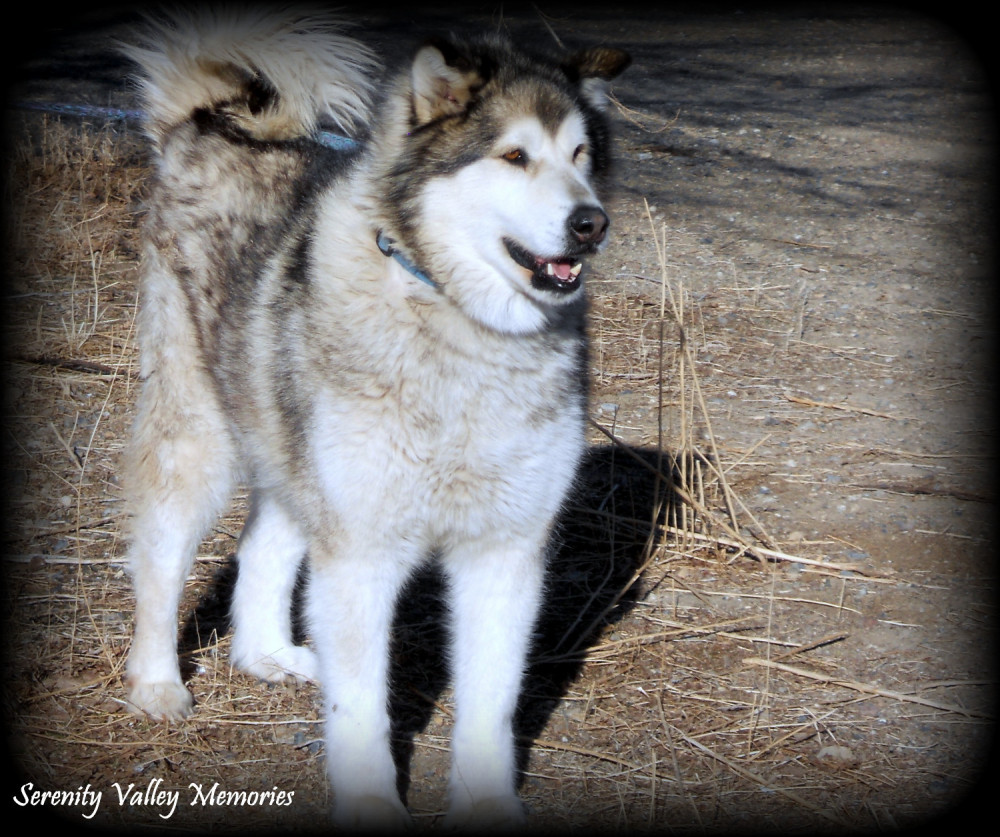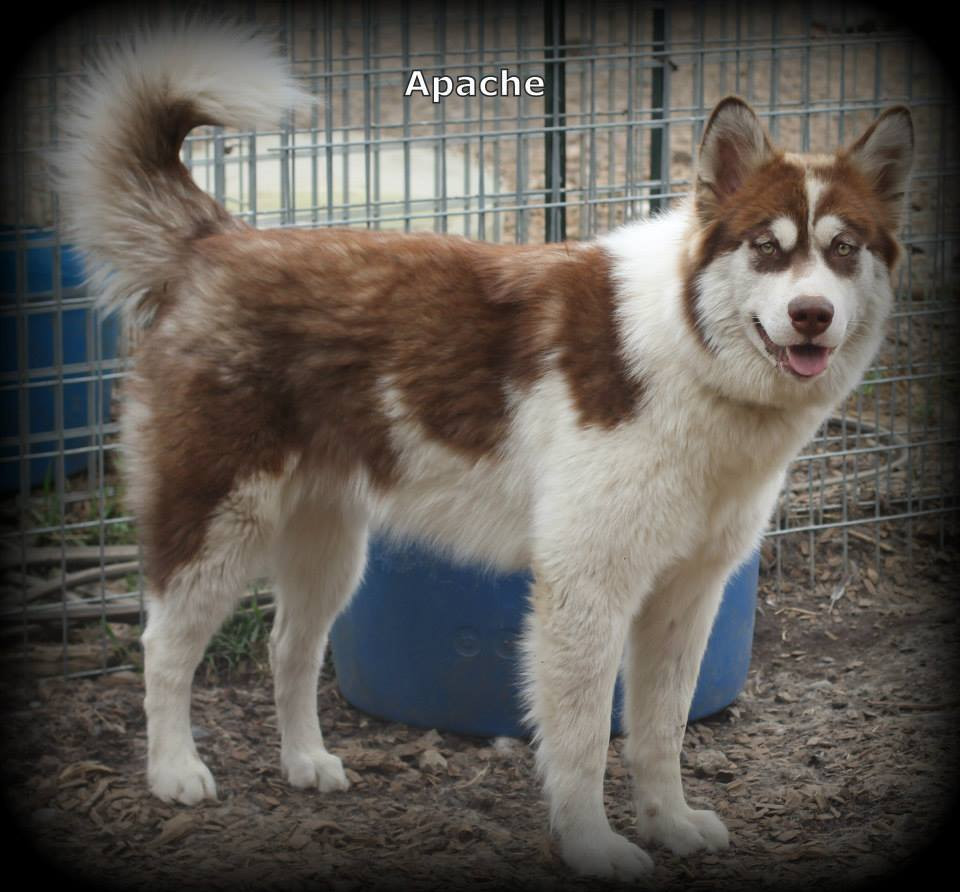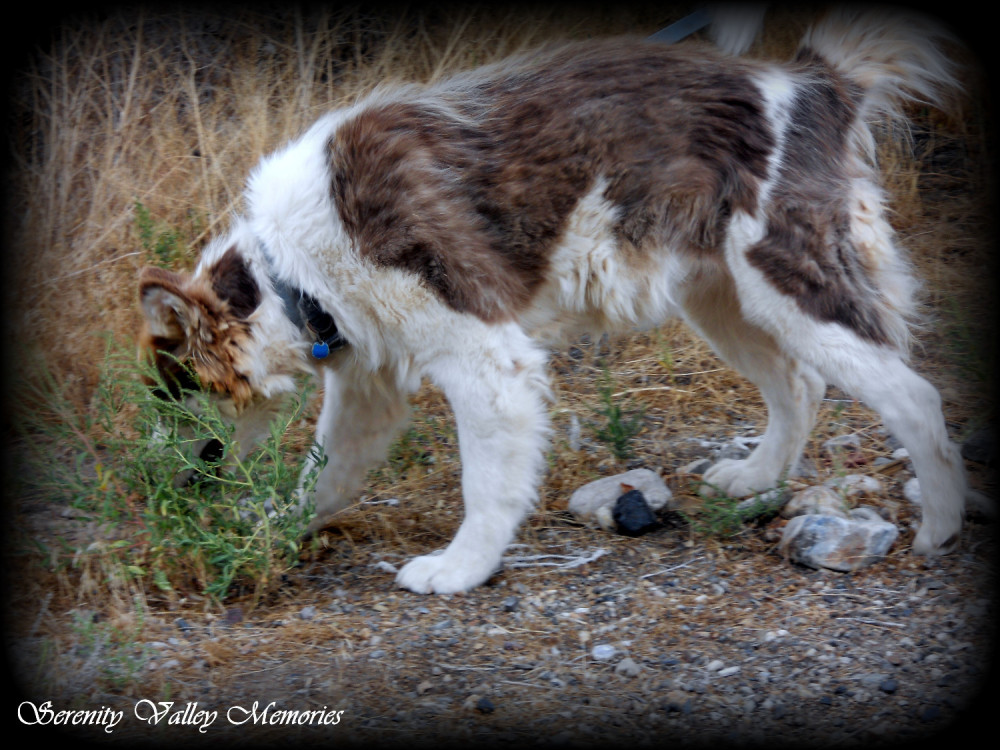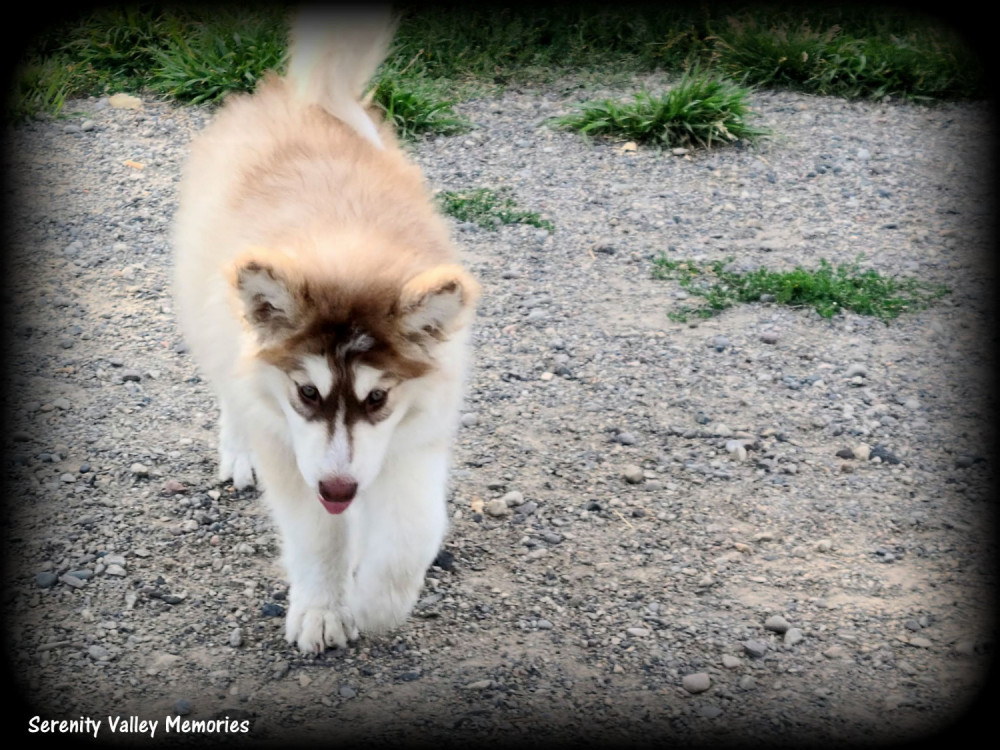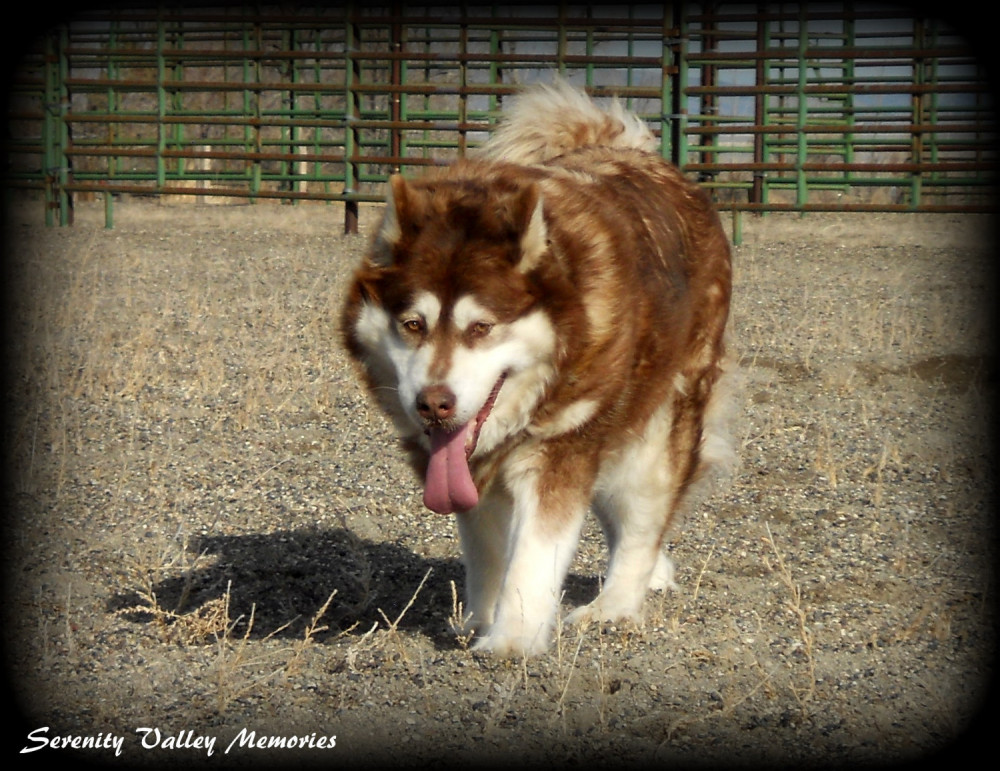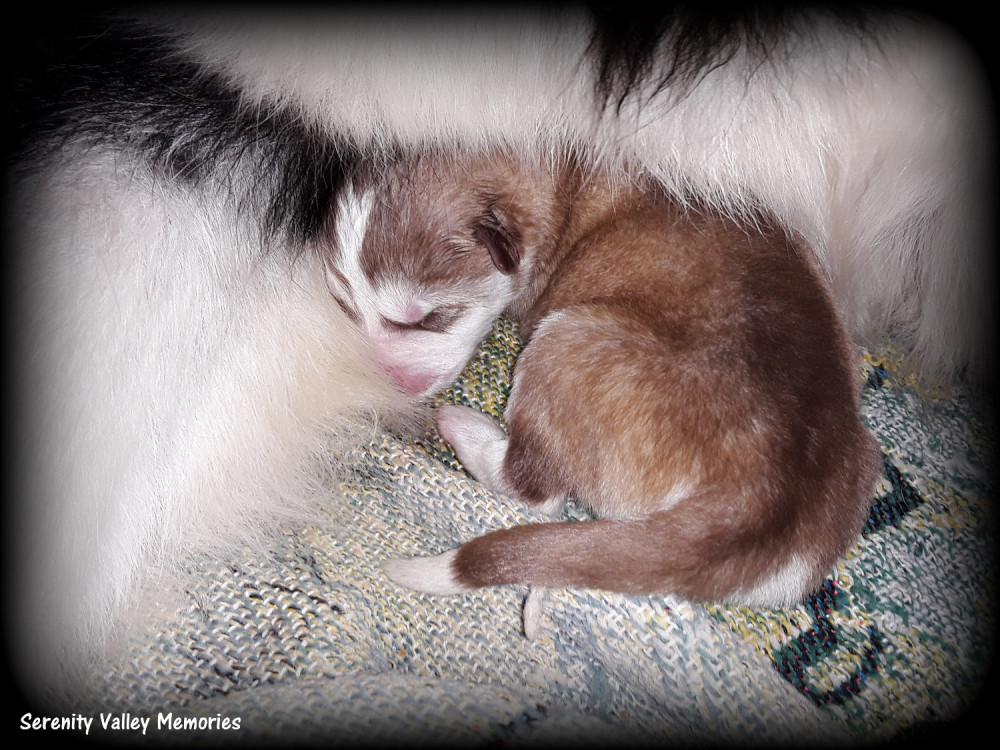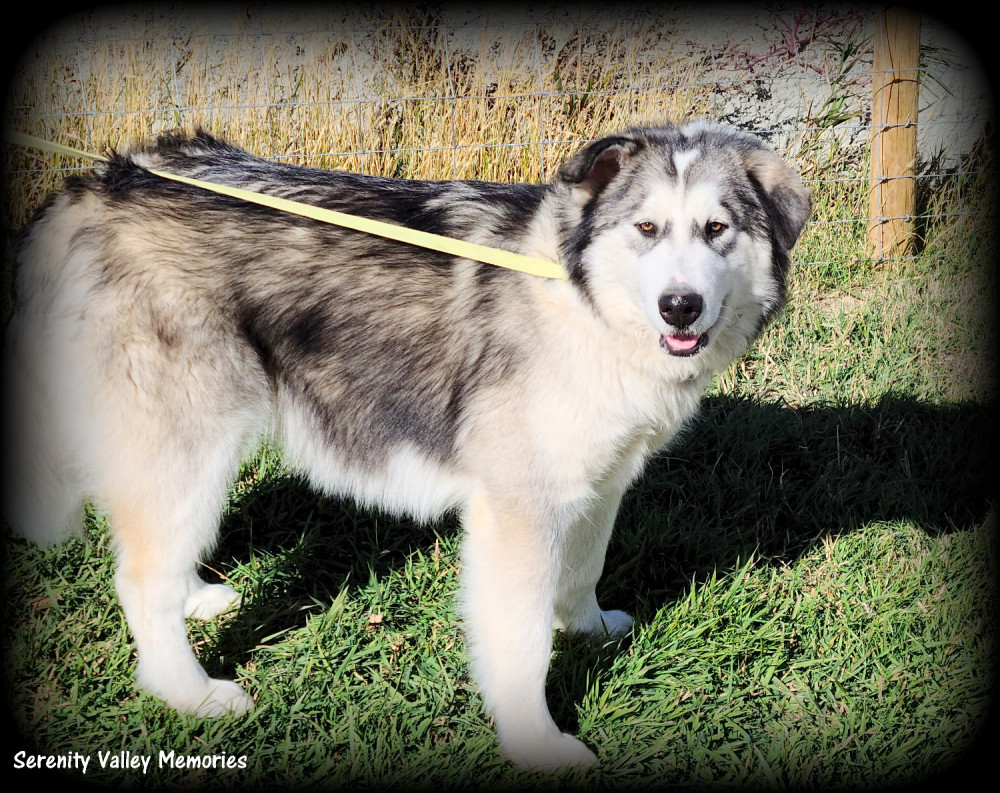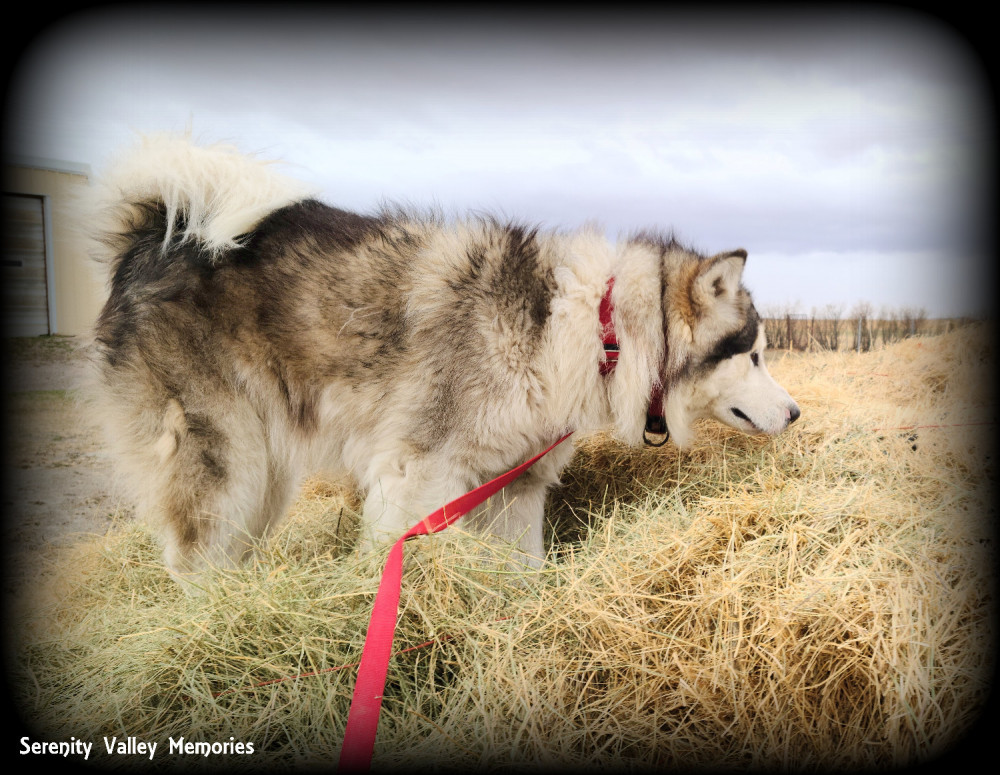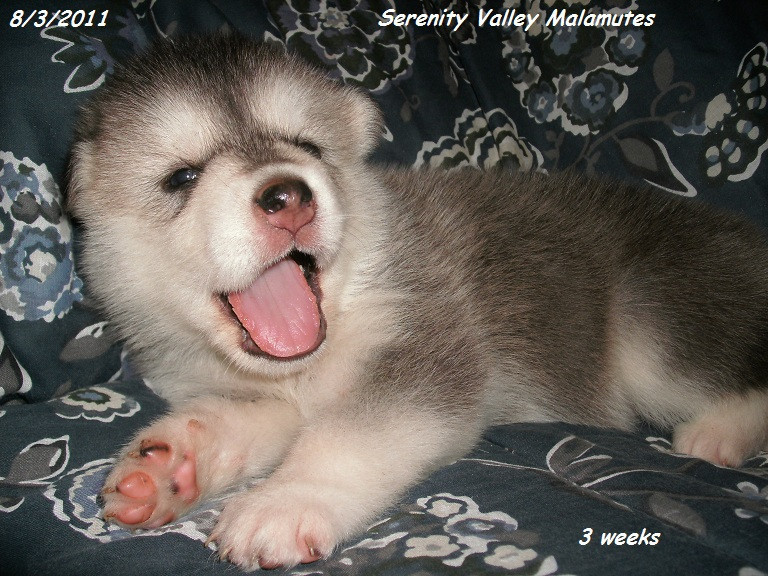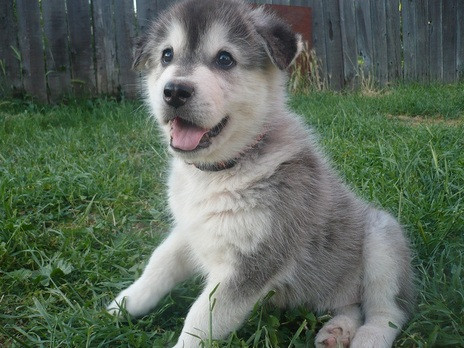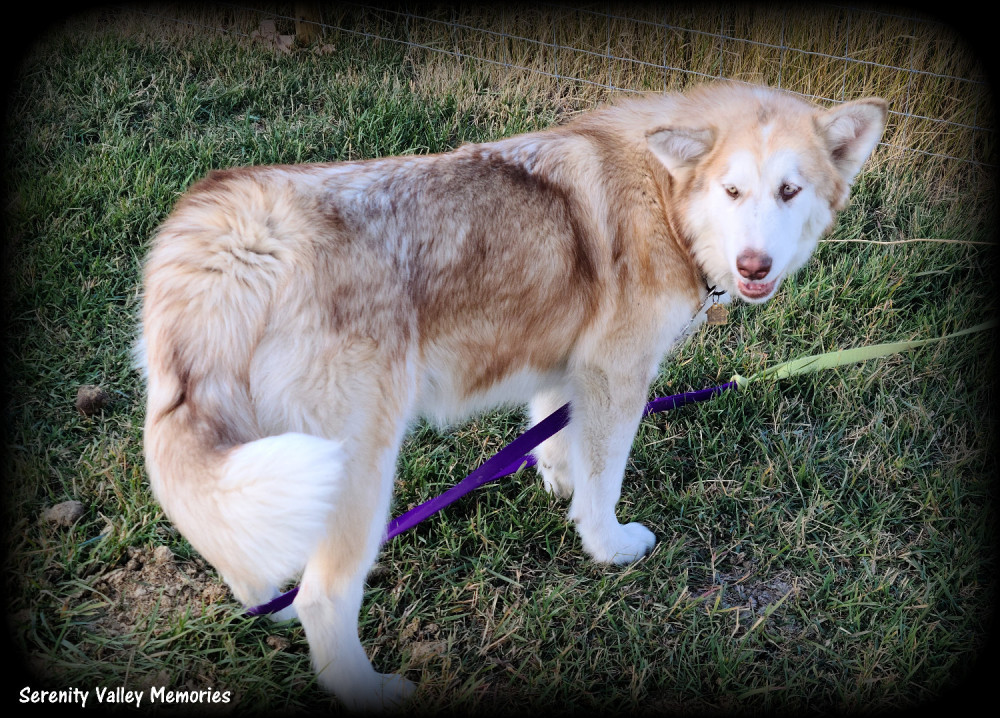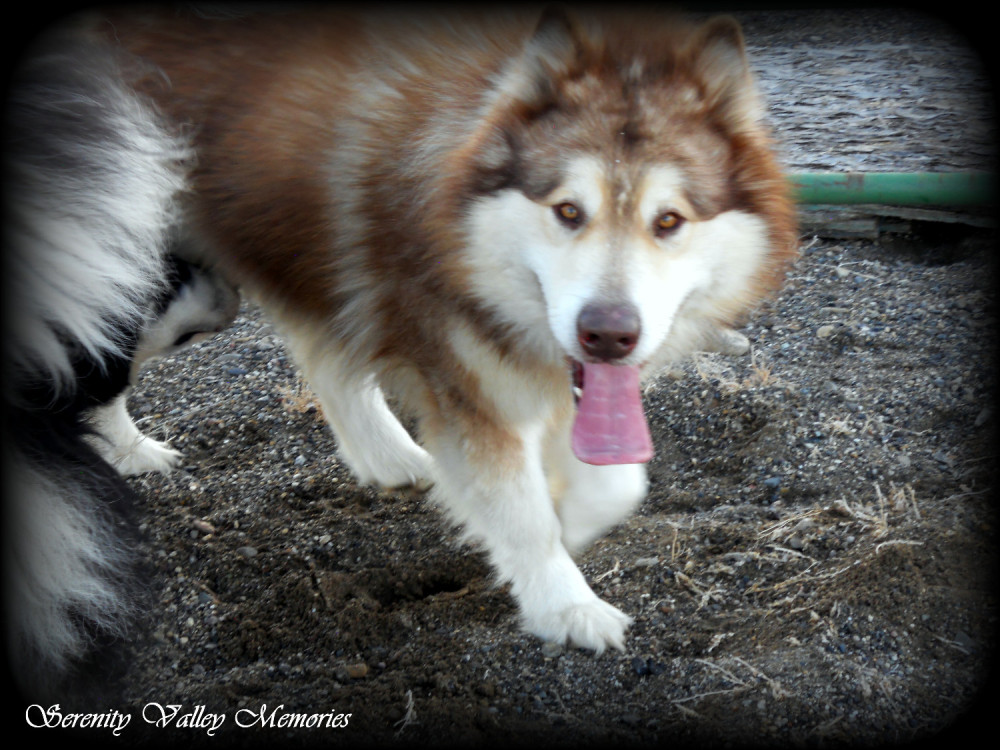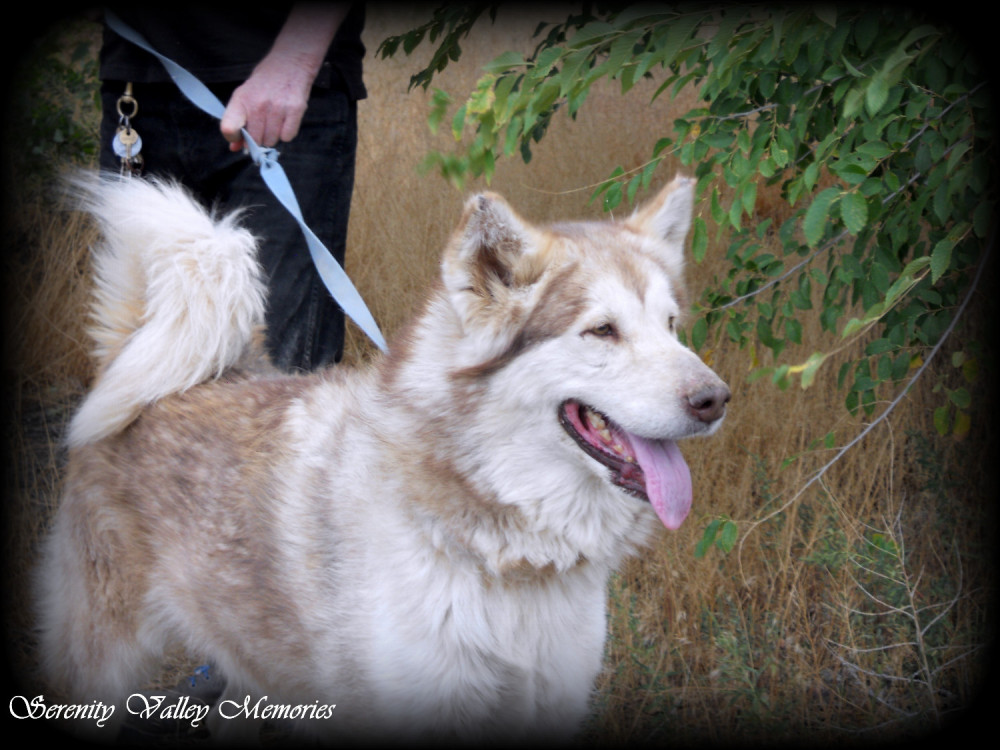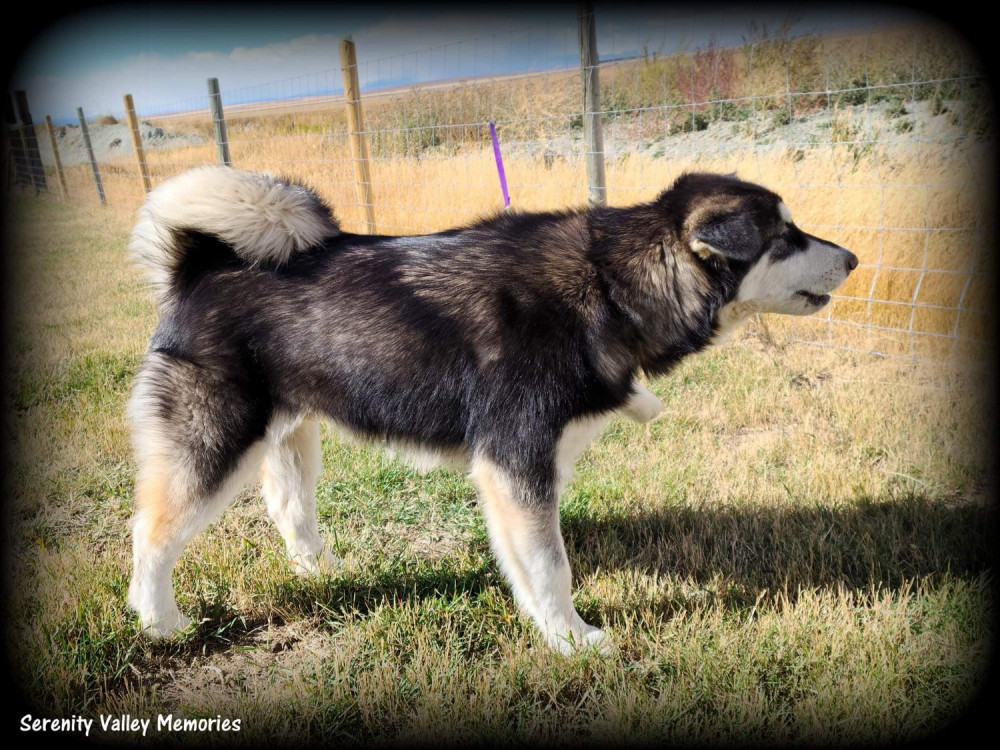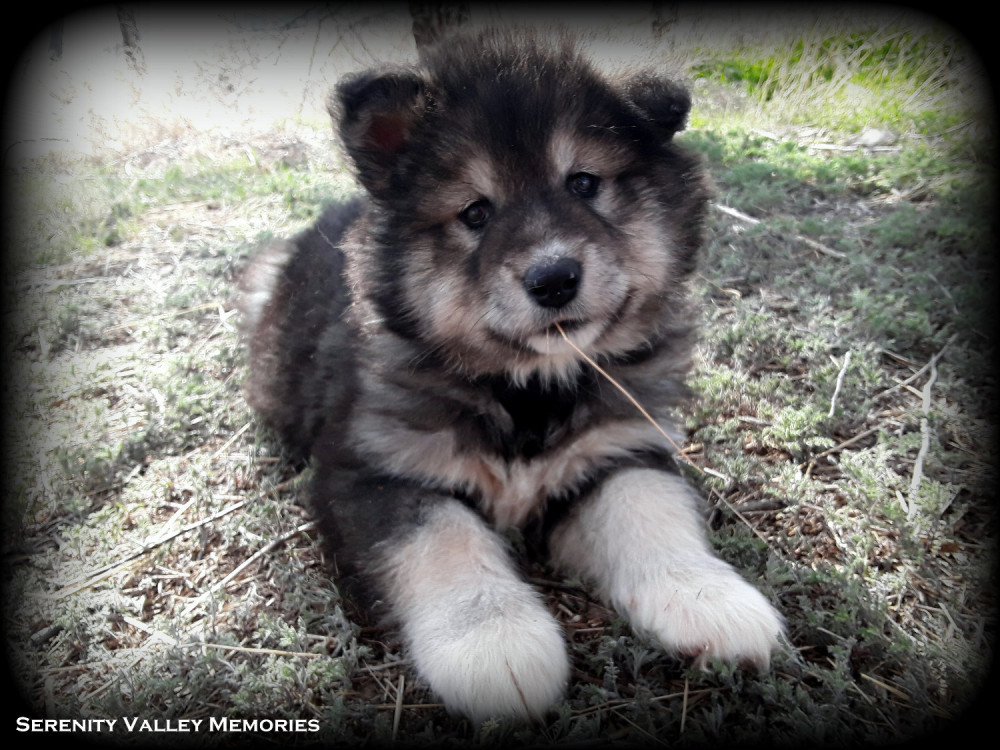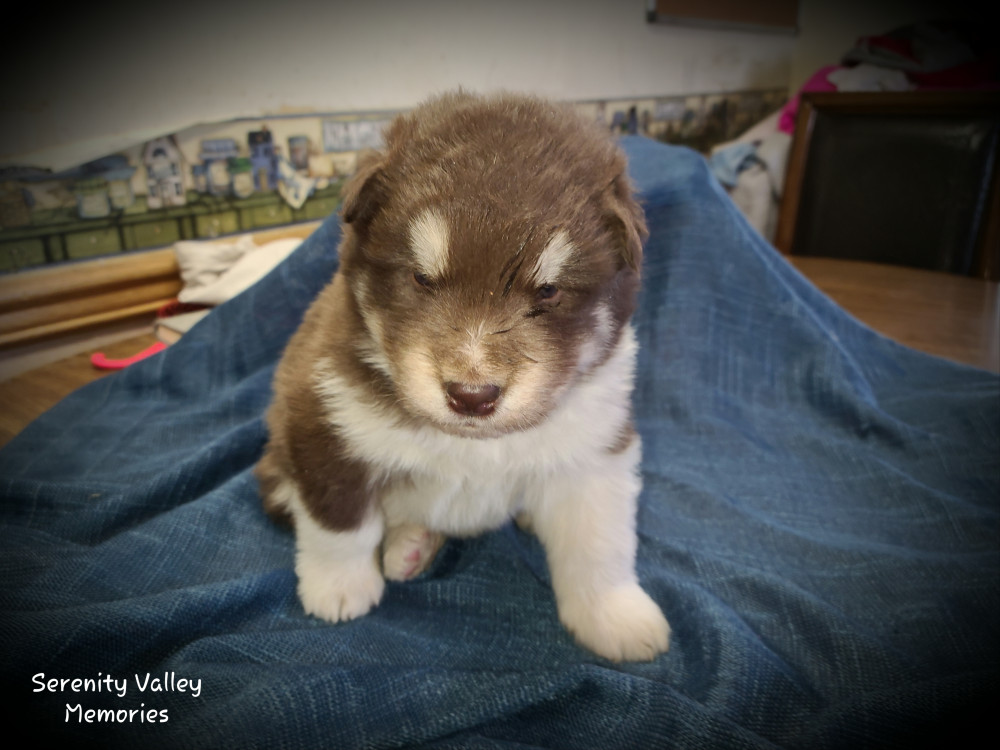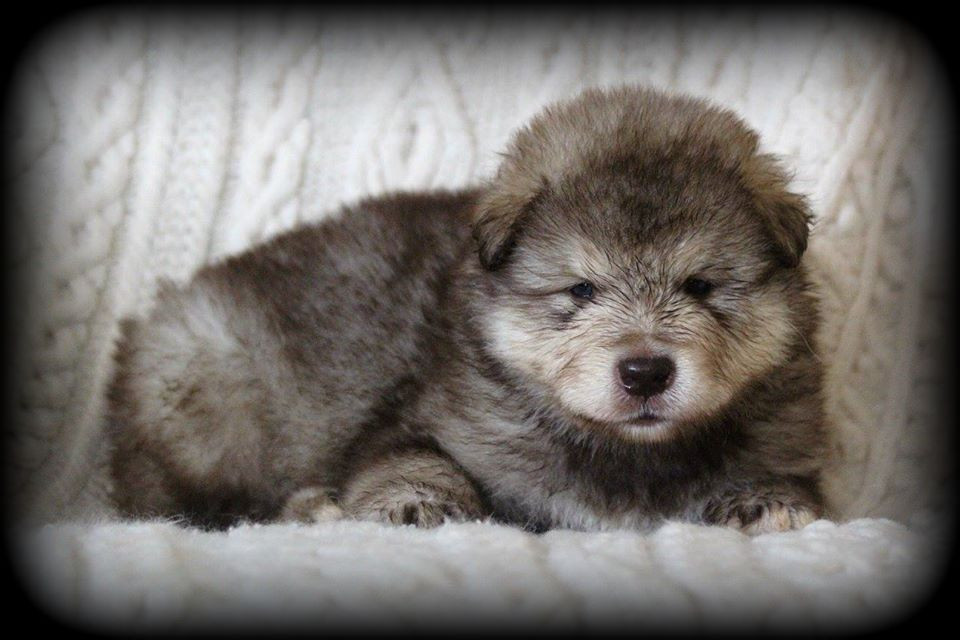Copyright 2007-2025 by Serenity Valley Malamutes & Serenity Valley Memories
serenityvalleymalamutes@live.com
Do not duplicate anything on this website without permission.
Copywrite
Eye Colours of the Alaskan Malamute
This page is to explain the eye colours of the Alaskan Malamute. There is a lot of misinformation and downright hate over eye colours. I hope to use this information to help people understand what causes the different eye colours. Please also note, we do NOT breed for any specific eye colours here.
Eye Colours of the Alaskan Malamute
There is a lot of confusion about Alaskan Malamute eye colour, so I am going to break down how eye colour is determined. There are a couple terms you will see in red. Please keep these terms in mind as they will play an increasingly important role as the explanations progress.
The first thing to know is that eye colour is determined by the type and amount of PIGMENT in the iris.
Brown Eyes
Brown is considered the "default" eye colour for Alaskan Malamutes. On the colour pages, I have lightly gone into how genes can stack. There is another form of mutation called "modifiers". When you see two Black-Seal Malamutes, but one is darker than the other, or of two siblings, one has darker brown eyes, this is because of those little modifiers. Modifiers can contribute to coat length, coat colour, and eye colour
Below, you can see how the brown PIGMENT ranges in darkness. This is due to the modifiers.
Black/White
Black/White
Regardless of their masking, you can tell a Black puppy apart from a Black Seal at an early age by looking at their sides. Black puppies will have very consistent colouring over their back and sides. Black Seal puppies have a darker stripe down their back and lighter sides.
Grey/White Malamutes have a Grey top coat with a light grey or off white undercoat. Some can appear quite dark, almost black, down to a very light grey
Grey/White
Grey/White
PHOTOS COMING SOON
Sable/White Malamutes have both Black and Red factors. In Black, Grey, and Blue Malamutes, this shows up as a red to cream colour in their coat, especially around their ears and on their sides
Sable/White
Sable/White
Red/White
Red/White
Red/White Malamutes have a Red top coat with a red or white under coat. Pigment is "liver" with no black evident. The Red can range from light to dark. Dark Red is often called Mahogany, however, these are two different colours.
PHOTOS COMING SOON
Mahogany/White
Mahogany/White
Mahogany/White Malamutes have a "chocolate" look mixed into their top coat colour. Their under coat ranges from dark to light Mahogany to white. Mahogany can range from dark to light and should not be confused with Dark Red.
Blue/White (Dilute Black)
Blue/White (Dilute Black)
Blue/White Alaskan Malamutes are effected by a diluting gene, which stacks with the Black or Grey gene. Their colour is "washed" out, giving them a dull, slate blue appearance. Their pigment is also effected, taking on a slate appearance, instead of crisp Black. Their under coat ranges from "blue" to white.
Lilac/White (Dilute Red)
Lilac/White (Dilute Red)
Lilac/White Malamutes are effected by the same gene as "Blue" Malamutes, except it stacks with the Red or Mahogany gene. The Red or Mahogany takes on a lighter, washed out look, their pigment is washed out or pale looking, and their eyes are a lighter, almost yellow. Given the wide range of light to dark with Reds and Mahogany, it can be difficult to tell a Non-Lilac from a Lilac. Because of this, they are actually considerably more common than people realise.
Silver/White
Silver/White
Silver/White Malamutes have a light Grey top coat with a White under coat
PHOTOS COMING SOON
Solid White
Solid White
White Malamutes can display Black factoring, Red factoring, and dilute factoring in their pigmentation.
PHOTOS COMING SOON
Patterns
Patterns
Many people think Agouti and Seal are colours, when in fact, they are patterns. They do not effect the colour in any way, only where the colour appears. Agouti and Seal can effect any colour, except Solid White.
Agouti
Agouti
Please see the examples below for more info
BLACK
BLACK SEAL
BLACK AGOUTI
BLACK
MAHOGANY SEAL
BLUE SABLES
BLUE SEALS
BLUE AGOUTI
